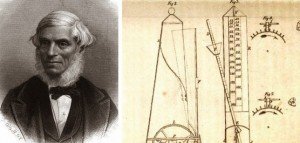I got the following question from David L. in Christchurch.
“ in the 1st Rhythm video you say you are playing a quarter note equals 70 and again quarter note equals 100. How do you know its faster? The sheet music you show is the same in all different speeds or variations. What tells you to play faster?”
David is a beginner and trying to learn what helps us determine our speed. In the Video, you know the speed because…I TELL you the speed :-), but David raises a very good point about understanding tempos.
The first thing to understand: what IS Tempo? On the surface, tempo is basically a way of describing the “speed” of the piece, but it can actually determine so much more. Nowadays, it’s common to see tempo simply referred to in numbers (as David mentions in his comment) 70, 100, 126, 215…
… but what does THAT mean?
These numbers refer to what is known as BPM or Beats Per Minute. The best way to understand it is to think of a clock…the second hand moves 60 Beats Per Minute. Which means that your “Beat” is exactly one second.
… but what exactly is a BEAT?
Ah-ha! Defining your “Beat” is the most important part. Most of my colleagues would refer to the beat as the PULSE and that’s because the pulse is a more organic way of understanding how music moves. Exactly like a heartbeat, a pulse is always flowing from one to the next.
From the standpoint of reading music, you can determine your beat to be lots of things. It can be a quarter-note, an eight-note, a half-note, a whole-note, a dotted-16th note, a double-dotted-quintuplet tied to the first two notes of a triplet (huh?)…on and on and on, but it’s usually written at the top of the music like these:
Most commonly you’ll see these written at the top left hand side of your sheet music. They are not included in thePercussionER’s music examples, because you should feel free to play them any any tempo you like! They are exercises, not works of music.
Once you have your pulse, you are ready to go! Plug it into your metronome and away you go…
…but did you mention that the tempo can indicate “so much more”?
Very good! Yes, this is ABSOLUTELY TRUE! I said that “nowadays” we typically see tempo in numbers but the metronome wasn’t invented until 1815 by Johann Nepomuk Maelzel.
Prior to the invention of the metronome, the tempo of the music was described in words which would give you an idea of how the music should “feel”. I prefer the word feel for the same reason I prefer the word “pulse”. Music is far more than a numeric indication of BPM’s.
The practice of describing the tempo is still used today, but seeing exact tempo markings is becoming the norm (usually alongside a description).
Here’s a few examples of some of the more common Tempo Terms you may see in music.
Adagio: Italian for Slowly
Lento: Italian for Slow (you see the subtle difference?) In reality the differences may come at the discretion of the composer, or more likely, their publisher.
Largo: Italian for Broad or Wide (you see, it’s slow, but its a very particular kind of slow)
Andante: Italian for Walking (not too fast…not to slow)
Presto: Italian for Soon - interpreted here as quickly
Allegro: Italian for cheerful
Vivace: Italian for lively
Not only can descriptive words be used to indicate a tempo, most often music was written in the style of a particular dance. These dance names also give a very good indication of how the music should FEEL.
These include dances like:
Bolero (Spanish), Gigue (Italian), March (English), Mazurka (Polish), Allemande, Bourrée, Gavotte, Minuet, Sarabande (French), Waltz (German)
This is exactly how popular dance music is classified today! The tempo often helps determine what kind of dances can be performed to the music and therefore helps it find a “classification” or label.
David, I hope this explanation helps you start understanding how we determine the speed of music as well as helps you understand that the Feel and Pulse of the music is the most important thing. There are obviously MANY, MANY more ways to describe the Tempo or Feel of a piece and you can find a more expansive list, complete with BPM estimates HERE
I’ll leave you here with two of my favourite videos involving the Metronome.
The first is György Ligeti’s Poème symphonique for 100 metronomes. This is Casey Cangelosi’s version and I love the setup. This is a piece that would definitely be enjoyable to experience to live!
The second is a detailed explantation of Systems Theory which demonstrates how metronomes, started at different times, will eventually sync up if they are playing the same tempo.
DISCLAIMER: This video is serious Nerd material.



